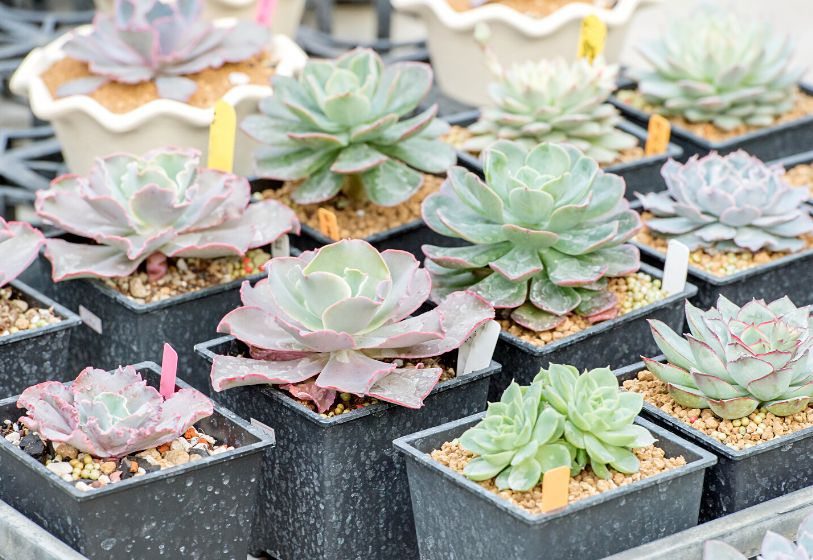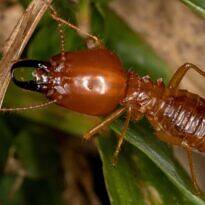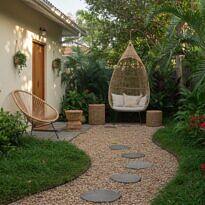
Fear not, this article isn’t about mistreating or murdering innocent plants. Succulent beheading, as we’ll explore below, is a beneficial technique with numerous advantages when done for the right reasons and with the proper technique. Despite the frightening name, succulent beheading is a straightforward and easy-to-accomplish technique, and with minimal care, you’ll achieve great success. Before diving into the step-by-step process of how to behead succulents, it’s crucial to understand why this operation is performed, so you’ll know the best time to carry it out.
Why Should You Behead Succulents?
I can think of at least 8 different reasons why you should consider beheading your succulents. Check out how this operation can be advantageous from the list below:
- Pest and Disease Control: By removing the lower parts of the plants, you also eliminate pests and diseases such as mealybugs and nematodes that tend to hide beneath. Yes, pests can be found below the soil. Many mealybugs feed on root sap, and nematodes can cause swellings that hinder absorption.
- Renews the Root System: Cutting off the roots forces the plant to grow new ones. Beheaded succulents develop a new root system that’s 100% efficient at absorbing water, nutrients, and anchoring the plant to the substrate.
- Restores Compactness in Stretched Plants: Plants growing under insufficient light tend to become stretched, with elongated stems and spaced-out leaves. These stretched plants lose their compact and symmetrical rosette appearance, becoming weakened and uncharacteristic. Even if light conditions are improved and the plant grows healthier, its altered stems and leaves won’t recover their original form. In this case, beheading is necessary for new growth to occur, restoring the original appearance.
- Enhances Sap Flow: Fresh roots and a short, healthy stem facilitate unobstructed and fluid sap flow. Without fibrous, decayed, scarred, or narrowed parts that could impede proper flow in both the phloem and xylem.
- Boosts Leaf Health: Beheading removes dry and wilted leaves from the base, improving ventilation and eliminating potential pests hiding in those areas. This presents an excellent opportunity for thorough plant inspection, allowing closer examination from various angles.
- Aids Growth Control: Older succulents tend to develop elongated trunks, resulting in a top-heavy appearance, which might not always be desirable. Beheading restores the rosette shape and shortening the stem gradually increases rosette diameter.
- Prevents Breakage: It’s not uncommon for top-heavy plants with large rosettes to lean to one side and break the stem. Beheading prevents this precarious situation. It also allows repositioning the succulent in the center of the pot, restoring symmetry.
- Produces Offshoots: Many struggle to propagate succulents from leaves or floral stalks. Sometimes it’s not the gardener’s fault – certain succulent species are harder to propagate from leaves. However, through beheading, new offshoots can emerge from the old stem, which might take some time to sprout and produce numerous new offshoots. During beheading, some leaves might fall or be removed. If they’re still plump, they can be placed in a nursery to grow more offshoots until you run out of space. As a result, you might find yourself donating or selling your plants.
- Rescues Sick Plants: Beheading offers a chance to save a plant in urgent need, such as when plants are afflicted by disease. Beheading allows healthy parts to be isolated from the diseased parts, giving the plant a second chance at life. If the top of the rosette is diseased, beheading prevents the disease from spreading to the entire stem. However, if the stem and roots are rotted, removing the rosette and replanting it is the salvation. Be aware that beheading only works in cases where the disease is localized and hasn’t spread. Diseases affecting the entire plant simultaneously can’t be treated through beheading.
There you have it, fear can no longer be an excuse to avoid beheading your succulent. After all, the reasons for beheading are highly advantageous, making the risks worthwhile. Yes, there are risks associated with beheading. Post-beheading, plants might become fragile, contract diseases, or even rot and die. But fear not, with the correct technique you’re about to learn, these outcomes are unlikely.

Step-by-Step Guide to Beheading
The first aspect to consider is the time of year. Succulents tend to grow most in spring and summer, making it the ideal time for beheading. If your succulent grows more in winter, then that’s the period for beheading. The crucial factor is that the plant should be in its vegetative growth phase. Never behead plants during their dormancy, as it weakens them and delays root development. Another time to avoid is the rainy season, as it increases the risk of diseases and rot.
Before starting the process, ensure your succulent is healthy and suitable for beheading. Plants that are already completely wilted or infested with pests at the top of the rosette should be treated before beheading. It’s advisable to behead well-nourished and hydrated plants, as they’ll have more water and nutrient reserves to quickly regrow and root. If there’s any preparatory action that can be taken, do so to ensure your plant is ready. Keep in mind that it will be without roots for a while, so it needs to sustain itself. If the plant is stretched, it’s better to place it in the right location with better lighting and wait for it to form a healthy rosette before beheading. However, if the reason for beheading is to save a sick
plant, don’t hesitate and cut right away. Don’t wait for the plant to improve, as its salvation might lie in beheading.

Also, gather the necessary materials. The most important is a sharp cutting tool for beheading. This could be a craft knife, pocketknife, pruning shears, or even a kitchen knife. Avoid serrated blades or inappropriate scissors that might crush the plant tissues and hinder proper healing. Our goal is a clean and straight cut. You’ll notice that some succulents are easier to cut than others. While some are as easy as slicing a cucumber, others can be fibrous and tough, making the process harder. Hence, having the right tool is essential.
Since many diseases can spread through contaminated tools, sterilize your scissors or knife between plants, and sometimes even between cuts if dealing with diseased plants. Some recommend passing the blade through a flame, but I prefer using a small piece of toilet paper soaked in alcohol. I find it has less impact on the metal and is equally effective.
- Using a sharp knife or craft knife, cut off the “head” of your succulent, keeping all healthy and well-positioned leaves intact while leaving a small portion of the stem for rooting. Excessive pruning without leaving this small portion increases the risk of rot and subsequent loss of your succulent. Additionally, this small stem helps anchor the rosette to the new substrate. If you plan to use the remaining stem for new offshoots, remember to cut it diagonally to prevent water accumulation at the cut site. If the cut edge looks uneven, don’t hesitate to tidy it up for a clean and healthy appearance.
- After cutting, blot away any sap that may have leaked from the cut area using a small piece of toilet paper.
- Remove all dry, wilted leaves and check for pests such as mealybugs and aphids, eliminating any you find.
- Also remove any flower stalks by cutting them at the base. Flowers consume a significant portion of the plant’s energy, which should be directed toward rooting after beheading.
- Optional: Apply some form of wound sealant. Succulents respond well to the use of cinnamon powder, propolis extract, or instant adhesive. Instant adhesive, like “Super Glue,” quickly seals the cut site, preventing contamination.
- Allow your succulent to heal in a semi-shaded area protected from rain for two to three days, observing the scar formation. Some succulents heal rapidly and can be replanted in a day, while others might need more time, up to a week. Never leave the detached rosette in the sun, as it can’t absorb water and will dehydrate faster than it can root. If you’re leaving the stem for new offshoots, don’t worry about this, and return it precisely to its former location.
- Once they’ve healed, you can proceed to plant the rosettes. Always use a well-draining succulent-specific substrate. Bury a small portion of the stem in the center of the pot or the desired location if you’re creating a composition. Choose a pot size proportional to the rosette’s size with a small margin for growth. Contrary to what might seem intuitive, larger pots don’t promote plant growth.
- Don’t worry about watering newly replanted rosettes; they still lack roots to absorb water, and overwatering can do more harm than good at this stage. Slightly moist substrate is sufficient to stimulate root formation. After about 15 days, resume watering your replanted rosettes without fear, gradually reintroducing them to sunlight. The stems left for new offshoots can be watered normally, just be careful not to wet the cut site.
- Remember to resume light fertilization with complete fertilizers suitable for succulents.
And there you have it, beheading is complete! I bet you thought it would be more complicated. But that’s the joy of cultivating succulents. Once you understand their ways and how they function, you’ll find it easy and rewarding to collect and care for these chubby beauties.







